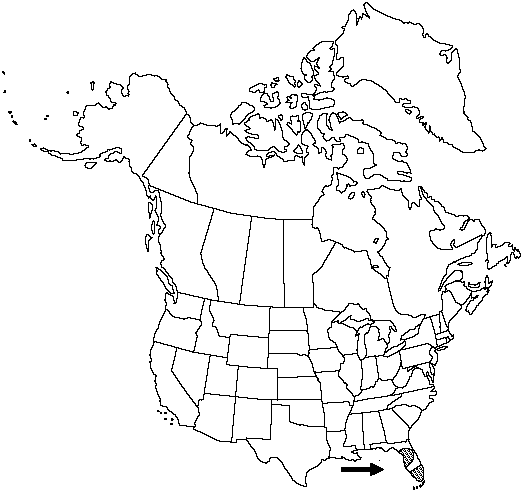Asplenium auritum
J. Bot. (Schrader) 1800(2): 52. 1801.
Roots proliferous. Stems erect, unbranched; scales brown throughout, broadly linear, 1–2 × 0.7–1.1 mm, margins shallowly and widely dentate. Leaves monomorphic. Petiole green to black, dull, 2–10 (–12) cm, 1/3–1/2 length of blade; indument absent. Blade narrowly deltate, 1–2-pinnate, 4–20 (–30) × 1.8–12 (–18) cm, thick, nearly glabrous; base not tapered; apex gradually tapered, not rooting. Rachis green to black, dull, abaxially glabrous. Pinnae in 10–22 pairs, linear-deltate, medial pinnae 1–4 (–9) × 0.3–1 (–2.5) cm; base with acroscopic auricle or pinnule enlarged, excavated in proximal 1/5–1/4; margins mostly 1–2-dentate-serrate, or lobed or pinnate proximally or in proximal 2/3; apex blunt in some 1-pinnate forms, gradually reduced to attenuate in strongly 2-pinnate forms; pinnules narrow, not auriculate. Veins free, evident. Sori 4–9 (–10) pairs per pinna, subcostal, nearly parallel to costae on both basiscopic and acroscopic sides. Spores 64 per sporangium.
Habitat: Mainly epiphytic on old sloping tree trunks in shady forests
Elevation: 0–50 m
Distribution

Fla., Mexico, West Indies in the Antilles, Central America, South America
Discussion
In the flora Asplenium auritum is evidently confined to Florida, where it is rare, occurring primarily on live oaks (Quercus virginiana Miller). The species is highly variable. Juvenile plants, less than 2 cm, tend to be 2-pinnate. In mature plants all stages between 1-pinnate and 2-pinnate leaves are found, but 1-pinnate are more common.
Selected References
None.
Lower Taxa
No values specified."/3lengthofblade" is not declared as a valid unit of measurement for this property.